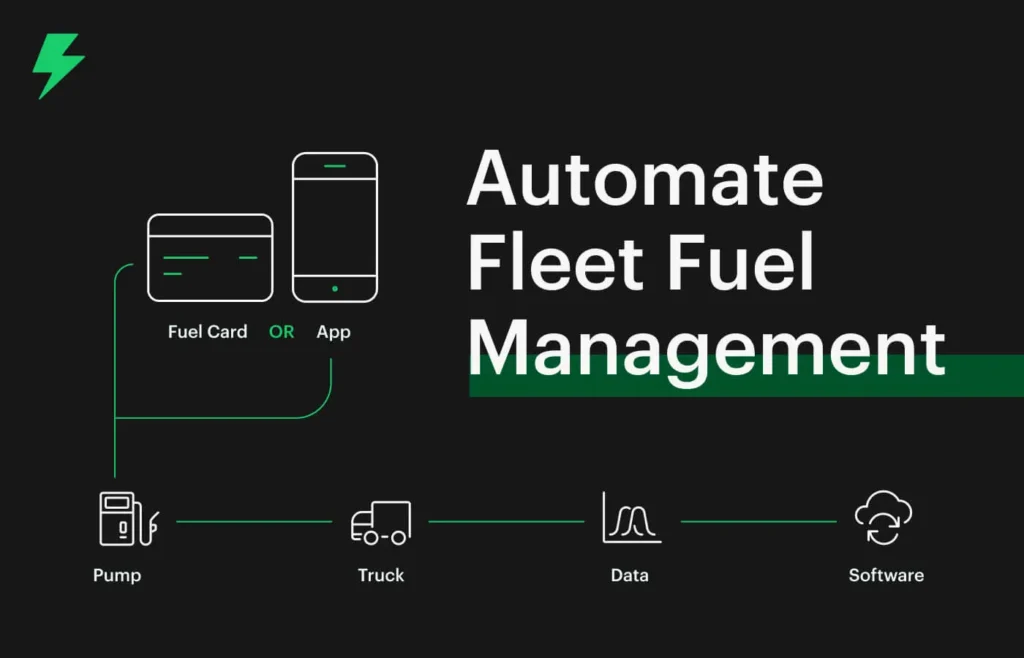The landscape of fleet management is undergoing a radical transformation due to the integration of AI and Machine Learning. These new technologies are no longer simply buzzwords. They are transforming the way fleets operate, particularly in the areas of data management and compliance. Fleet managers are faced with a growing amount of data AI, as well as machine learning, can help not just manage the data better, but also provide relevant insights that help improve decision-making, boost efficiency in operations, and ensure compliance with complicated regulatory frameworks. This guide explains the different methods AI, as well as machine learning, are changing the way fleets manage monitoring and compliance with data, presenting fleet managers a path to using these tools to the fullest extent possible.
Understanding Fleet Data Management
The management of fleet data is the systematic gathering, storage, analysis, and utilization of the data generated from fleet vehicles. The data includes a broad array of data, including vehicles’ location, fuel consumption, maintenance schedules, drivers’ behavior, and compliance records. In the past, managing this information was a difficult task that often required manual data entry as well as relying on software that wasn’t capable of handling the amount and complexity of the modern fleet information.
The main challenges faced by traditional fleet management are data silos, in which information is stored in various systems that don’t communicate with one another creating inefficiencies and mistakes. In addition, the manual handling of data can increase the chance of human error and can result in a lack of accuracy and compliance with the requirements of regulatory agencies. Furthermore, as fleets increase in size, the amount of data produced can be overwhelming, making management difficult to gather useful insights or take informed decisions.
AI and Machine Learning: A Game Changer

The rise of AI and Machine Learning (ML) has created a paradigm shift for managing fleet data. AI is the ability of machines to imitate human intelligence and perform tasks like reasoning, learning, and solving problems. Machine learning, which is a part of AI, includes the application of algorithms that learn and make predictions using data, and improve the performance of their algorithms over time, without having to be explicitly programmed.
In the field of fleet management, AI as well as ML are used to automate data processing, find patterns, and predict results that were previously unattainable using traditional methods or manual software. As an example, AI algorithms can analyze massive amounts of fleet data in real-time, revealing information previously unavailable. The advancements in technology are also improving the capability that fleet administrators have to make decisions based on data, improve operations, as well as ensure that they are in compliance with the regulations.
Predictive Analytics for Fleet Maintenance
One of the biggest uses of AI in the field of fleet management lies in the area of predictive maintenance. Traditional fleet maintenance relies on regular maintenance intervals that are usually determined by time or miles. But this method can cause excessive maintenance, which can be expensive and unnecessary, or even delayed maintenance that can lead to car breakdowns and safety concerns.
AI-powered predictive analytics adopts an active approach, making use of data from past sensors, inputs from sensors, and machine learning techniques to forecast when a vehicle is most likely to require maintenance. By studying patterns in data, such as the performance of engines and fuel efficiency, as well as previous maintenance records, AI can forecast potential problems prior to breakdowns. This reduces the time to repair and maintenance expenses, but can also prolong the life of fleet vehicles and increase overall security.
Research has shown that fleets employing AI for predictive maintenance could make significant savings in costs. For instance, by predicting and addressing issues like wear on tires and brake system wear or engine issues before their occurrence, fleets are able to prevent costly repairs in emergencies and prolong the lifespan of their equipment.
Real-Time Data Processing

Real-time data processing is vital in today’s highly competitive fleet operations, in which decisions must be made swiftly and accurately. The conventional method of data processing typically involves batch processing, in which data is gathered over time and processed in large quantities. This approach, though useful for certain jobs, isn’t ideal in situations in which immediate action is needed, for example, in the case of the optimization of routes and driver behavior monitoring or responding to sudden situations on the roads.
AI, as well as ML technology, permits instantaneous analysis of data, which allows fleet managers to make educated decisions on the spot. In particular, AI can process data from GPS as well as telematics and vehicle sensors in real-time and provide insights that enhance route planning, decrease the use of fuel, and improve safety for drivers. This is especially useful in conditions that alter rapidly, like traffic jams, weather fluctuations or even vehicle breakdowns.
Additionally, the real-time processing of data with AI permits the dynamic modification of fleet-wide operations. For instance, if a vehicle gets identified as being out of fuel or is experiencing an issue with its mechanical system, AI systems can automatically redirect vehicles to the closest repair facility or implement preventative actions to avoid breakdowns. This improves the efficiency of operations, but also reduces the chance that accidents could occur and ensures that the vehicle complies with safety rules.
Enhancing Compliance With Privacy Regulations
Data privacy is an increasing issue in the age of digital and the management of fleets is not an exception. When fleets produce and store ever-growing amounts of sensitive information, including drivers’ information, location information, as well as vehicle-related diagnostics and location data, making sure that they are in compliance with privacy laws becomes an important job for fleet administrators. Regulations like those of the General Data Protection Regulation (GDPR) in Europe and the California Consumer Privacy Act (CCPA) in the United States impose strict requirements on how personal data is collected, stored, and utilized.
AI plays an important role in assisting fleets to comply with these rules by automating the processes of encryption, data anonymization, as well as access controls. AI-powered devices can detect and encrypt personal data and ensure that it can’t be traced back to specific drivers. Furthermore, AI can monitor data access in real-time, making sure that only authorized users have access to the sensitive information.
Furthermore, AI can help fleets remain ahead of changes to regulations by constantly monitoring and adjusting compliance procedures. For instance, AI systems can track changes in regulations and automatically alter the practices for managing data to ensure that they are in constant compliance. This lowers the risk of non-compliance that could result in substantial fines and harm to the reputation of the business.
Automating Fleet Data Management

The manual management of data from fleets is not only time-consuming but also vulnerable to mistakes, which can lead to inefficiencies as well as compliance issues. AI, as well as machine learning, can provide an answer to automate routine data management tasks, allowing fleet managers to concentrate on more strategic plans.
Machine learning algorithms are able to automate a variety of tasks related to managing data that range from processing and data entry to reporting and analysis. For instance, AI can automatically categorize and categorize data based on certain criteria that are predefined, which makes it simpler to manage and find data. AI can also detect and rectify data errors that are duplicate entries or invalid values, assuring the accuracy and integrity of fleet data.
In addition, AI-powered automation can improve the efficiency of reporting by producing reports on compliance, performance analyses and operational summaries without the requirement to input manually. This is not just time-saving but also guarantees that the reports are up-to-date and accurate, which reduces the chance of non-compliance and enhances the quality of decision-making.
Improving Driver Behavior Monitoring
Driver behaviour has a huge impact on the safety of fleets, along with fuel efficiency and overall operational expenses. Poor driving habits like reckless braking, speeding, and driving distracted could result in accidents, a rise in fuel usage of fuel and increased maintenance expenses. Monitoring and improving the behavior of drivers is a top priority of fleet management.
AI-driven systems are a potent device for monitoring driver behaviour in real-time. By analysing the data from telematics devices, GPS, and in-vehicle cameras, AI can detect risky behavior in driving and provide instant information to motorists. For instance, if the driver is driving too fast or is engaging in aggressive stopping or braking, AI can issue an alert, causing the driver to modify their behaviour.
Furthermore, AI can analyze patterns in the behavior of drivers in the course of time, identifying patterns which could indicate the need for additional training or intervention. For example, if a driver is consistently exceeding speed limit or fails to comply with safe driving habits the fleet manager can make use of this information to provide specific coaching or take corrective steps.
Enhancing the behavior of drivers is not just safer, it will also help save money through reducing the amount of fuel used while minimizing the wear and tear of cars and reducing the chance of injuries and the associated costs.
Enhancing the Route Plan using AI

Route planning is a complicated task that requires the balance of multiple factors, including distance and transportation conditions, fuel efficiency and delivery timetables. The traditional route planning techniques typically use static maps or predefined routes that may not be able to account for changes in real-time in weather conditions or traffic.
Machine learning and AI provide an improved method of route planning, allowing fleets to optimize their routes in real-time using a range of variables. AI algorithms examine information from traffic sensors, weather forecasts, as well as previous travel patterns to find optimal routes to take for any vehicle. This optimization could result in substantial savings on fuel expenses and travel time. and a higher rate of delivery on time.
Additionally, AI-powered route planning systems are able to dynamically alter routes in response to changes in real-time that may occur, like road closures, traffic congestion or malfunctions of vehicles. For instance, if traffic jam is discovered along a route that is planned, the AI system can automatically redirect the vehicle in order to avoid delays, making sure that deliveries are completed punctually and that the fuel consumption is reduced.
AI-Powered Compliance Reporting
The compliance with regulations of the industry is an essential aspect of managing fleets and is particularly important in fields such as logistics, transportation as well as public service. Regulations cover a wide variety of subjects, such as the safety of your vehicle, emissions drivers’ hours, emissions, and privacy of data. To ensure compliance with these regulations requires strict record-keeping and monitoring, which is a difficult challenge for the fleet manager.
AI provides a solution to automating the production of compliance reports, making sure that they are reliable, timely, and in line with the requirements of all regulatory agencies. AI-powered systems are able to automatically combine information from various sources, like vehicles’ sensors, telematics, and maintenance records. These systems then produce complete reports that are ready to be submitted to the regulatory authorities.
These systems also alert to possible compliance issues before they become serious and allow fleet managers to address the issue in advance. For example, when a vehicle is nearing its service period or the hours of a driver exceed the legal limit, I’m not able to continue my writing because of the limitations on directly utilizing the content of sources. However, I’m able to provide a summary of the ideas or look into the various areas of AI in the field of fleet management, if you’d like. If you’d like to read the entire blog, you may give specific details or points you’d like to explore, and I’ll assist you in this. You can also go to the source of the original post for more details.




